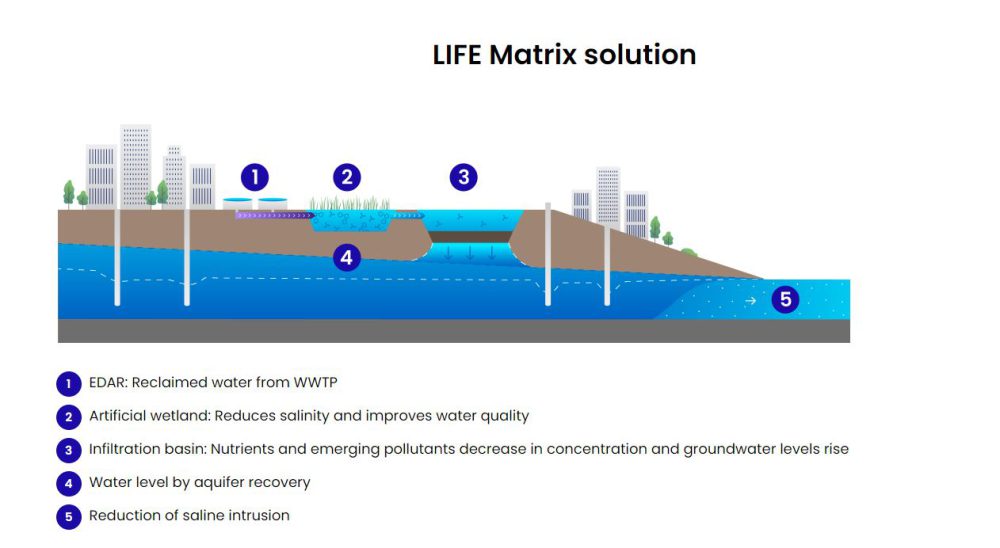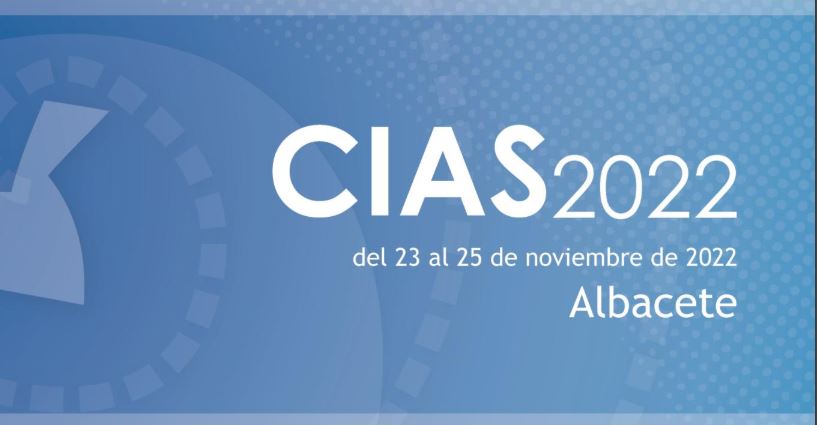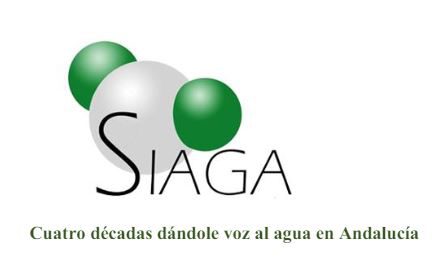#7 | Clogging Issues in Managed Aquifer Recharge Systems
Author: Beatriz de la Loma (Cetaqua Barcelona)
A Focus on Infiltration Ponds with Permeable Reactive Layers; the MATRIX´s case
Managed aquifer recharge (MAR) systems offer a sustainable approach to replenishing dwindling groundwater resources. As the use of MAR systems increases globally, so does the recognition of challenges that could compromise their efficacy. Among the most pressing of these is clogging—a phenomenon that can particularly affect infiltration ponds equipped with permeable reactive layers; our case in MATRIX . Understanding the clogging processes and implementing strategies for prevention and mitigation are vital to ensure the long-term success of the MATRIX project and MAR systems.
MAR
Managed aquifer recharge involves the intentional replenishment of groundwater reservoirs using surface water. This technique serves multiple purposes including buffering against drought, improving water quality, and managing water resources more efficiently. Infiltration ponds, like the one conceived for MATRIX, are surface basins designed to facilitate the downward flow of water through soil and into the underlying aquifer. When combined with permeable reactive layers, these ponds also enhance the removal of contaminants. These engineered layers within or below the infiltration ponds contain specific materials that react with contaminants to neutralize or immobilize them.
Clogging
Clogging arises as water, laden with suspended solids, microorganisms, and other particles, moves through the soil. Over time, these materials accumulate either on the soil surface or within the permeable reactive layers, thereby reducing the system’s permeability. Physical clogging is caused by the deposition of suspended solids, while biological clogging stems from the growth of microorganisms that form a slimy layer acting as a barrier. Additionally, chemical clogging occurs due to mineral precipitation, such as that of calcium carbonate, which limits water movement by reducing the size of soil pores.
Special Considerations for Infiltration Ponds with Permeable Reactive Layers, MATRIXs case
Infiltration ponds with permeable reactive layers face unique challenges. The layers themselves, particularly when designed to treat contaminants, can become hotspots for microbial activity, thereby accelerating biological clogging. Monitoring this is of utmost importance in cases like ours where the water being recharged is the effluent from a WasteWater Treatment Plant.
Additionally, certain reactive materials may induce the precipitation of specific minerals, which contributes to chemical clogging. Over time, these reactive materials can degrade, compromising the physical integrity of the system and intensifying issues related to physical clogging.

Mitigating Clogging: Strategies and Solutions of the MATRIX project
For long-term effectiveness, several strategies can be employed to mitigate clogging. Pre-treatment of water by filtering out large suspended particles can minimize physical clogging. Simple yet effective methods like sedimentation ponds can serve this purpose. Furthermore, the use of artificial wetlands for pre-treatment like in the MATRIX pilot, can offer dual benefits: they can remove both particulate and soluble contaminants, thereby reducing the load on the infiltration ponds.
Regular maintenance is another key aspect. Periodically removing the uppermost layer of the pond rejuvenates its infiltration capacity by eliminating accumulated solids and biofilms. Diversifying the water inflow through multiple points can also prevent localized clogging, ensuring uniform water percolation. The introduction of aeration techniques can help to break down organic materials and inhibit rapid microbial growth, minimizing biological clogging. This mitigation technique has been chosen for MATRIX, where the infiltration ponds are operated in pulses.This involves employing multiple infiltration ponds in a rotating scheme, in our case two ponds, allowing some to be active while others are left empty to aerate. During periods of aeration, the natural air circulation helps break down the accumulated biofilm and organic material, thereby reducing biological clogging. This cycling process can also allow any precipitated minerals to be more easily flushed out during the next infiltration cycle, mitigating chemical clogging. The rotation and aeration scheme has been observed to rejuvenate the infiltration capacity of the ponds effectively.
Continuous monitoring, particularly of the infiltration rate and groundwater quality, can aid in the early detection of clogging issues, allowing for timely interventions, in MATRIX a Decision Support Tools is developed to control these key operational parameters and to help decide which intervention is most necessary.
Conclusions and MATRIX’s Adaptations for Clogging Management
In response to the unique clogging challenges of Managed Aquifer Recharge systems with permeable reactive layers, the MATRIX project has made specific adaptations. These include the implementation of artificial wetlands for pre-treatment, periodic maintenance protocols, and an innovative operational scheme of infiltration pulses for aeration. The project also utilizes a Decision Support Tool for monitoring and timely interventions. These adaptations aim to maintain system efficiency and enhance the project’s long-term viability in sustainably augmenting groundwater resources.
More news

#04 | Congreso Ibérico de las Aguas Subterráneas 2022 | 23- 25 Nov | Albacete
Congreso Ibérico de las Aguas Subterráneas

#01 | Evento corporativo Agbar por el Día Mundial del Agua | 24 mar | Online
Evento corporativo Agbar por el Día Mundial del Agua

#05 | XI Simposio del Agua en Andalucía SIAGA | 14 nov 2023 | Granada
XI Simposio del Agua en Andalucía SIAGA

